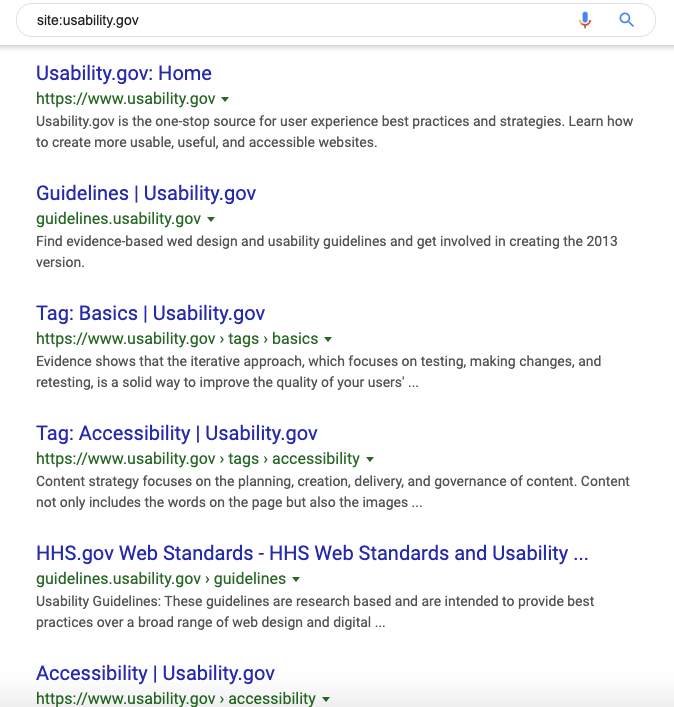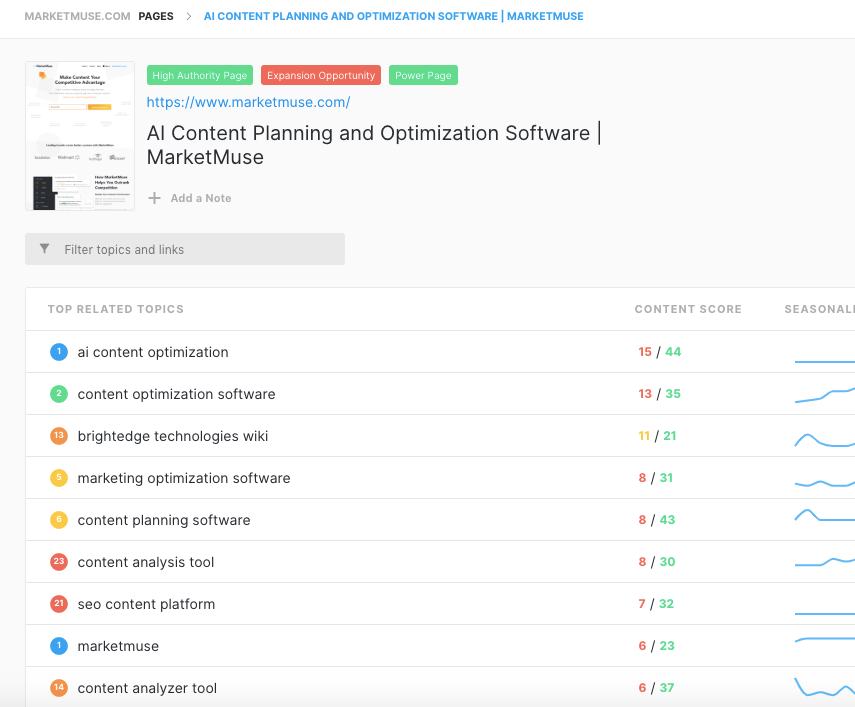User Intent Analysis – How to Find Mismatches and Fix Them
One of the best ways to optimize content is by identifying user intent mismatches and creating content that is a better fit. Many sites are full of these opportunities and recognizing the problem can provide a wealth of low-hanging fruit. The content you create or improve using this process stands a better chance of ranking well than most any other opportunity.
Why It’s Important to Identify User Intent Mismatches
A decade ago, when search was much simpler, user intent wasn’t an issue. Google returned “10 blue links” on every page of the SERP and optimization was much easier. But times have changed and the search engine has evolved. Let’s briefly look at some major milestones to give us some context.
Google Hummingbird
In the fall of 2013, Google significantly changed their algorithm, transforming the way search works. Its core purpose was to quickly sort through the Google index and return the most-relevant results. It also incorporated semantics and aspects of language processing to serve better results for conversational queries.
Hummingbird transformed the index from a collection of keyword terms to a collection of entities (people, places, things, dates, etc.).
Google RankBrain
RankBrain is a component of Hummingbird. It’s a machine learning engine designed to interpret users’ intents and serve the most-relevant results.
Relevance metrics from RankBrain are used to prioritize SERP rankings. RankBrain has been referred to as the third most important ranking signal.
Search Authority
Authority is the ultimate goal of SEO. It’s the result of 100s of ranking factors and establishes sites as the most-trustworthy and highest-performing in their respective niche.
Google’s Search Quality Evaluator Guidelines refer to this as EAT: Expertise/Authoritativeness/Trustworthiness. According to their guidelines, expertise refers to the create of the content while authoritativeness and trustworthiness extends to the content itself and the website,
In practice, we see authoritative domains are “given the benefit of the doubt” and can receive rankings for high-volume terms for which they actually have no content. BestBuy is a good example.

Google considers Best Buy somewhat of an authority on “customer service.” This is indicated by several, high-volume, “customer service” queries ranking on Best Buy’s homepage — despite no supporting content on that page or the rest of the site.
- XFINITY customer service (position 41)
- USAA phone number (position 41)
- Facebook customer service (position 34)
- eBay customer service phone number (position 38)
- AT&T customer support (position 50)
Later, we’ll look at how to take advantage of this situation. First we need to review topic cluster as they play an important role in our content optimization efforts.
Topic Clusters
We target the previous factors by optimizing and creating Topic Clusters.
- Pillar Pages are comprehensive pages for focus topics that provide depth.
- Supporting Pages provide breadth of coverage and fulfill different intents.
- Internal Linking completes the cluster and establishes topical authority.

Having many strong clusters also contributes to domain authority and the performance of new and existing content.
User Intent Mismatch Analysis
Google’s index is a collection of results about entities, prioritized by authority and relevance. The following workflows will help you identify opportunities to create content plans that comprehensively cover specific entities and fulfill users’ intents.
User Intent Types
Google’s Search Quality Evaluator Guidelines recognize four types of search intents:
- Know: Users who want to learn something (includes Know Simple which can be answered with a fact, statistic, etc.)
- Do: Users want to take action; download, buy, obtain, watch a video, etc.
- Website: Users want to navigate to a specific brand’s site or section thereof.
- Visit-in-Person: User wants to find local businesses, restaurants, theaters, etc.
Queries can include multiple intents as can be seen in this example SERP for the search term “Harvard.”

Short-tail keywords such as this often exhibit intent fracture. There are multiple reasons a searcher might enter this term. They may want to:
- Visit the official homepage (Website)
- Get directions (Visit-in-Person)
- Learn more about the school (Know).
Understanding these different intents is key to properly optimizing pages for the appropriate target.
How to Identify Intent Mismatches
Sites with high authority will attract rankings for queries they don’t actually fulfill. Rankings for these terms are usually not significant. However, by creating a new page that explicitly targets the query, it will have a good chance of success. Google has already attributed this query to your domain, now you have a page explicitly targeting that query’s intent.
Here are the pages that typically contain intent mismatch opportunities:
- Homepage
- Category Pages
- Power Pages (any page that has lots of ranking keywords)
- Highest-Ranking Pages
Look for low-ranking terms on these pages and flag any with high-demand that are clearly not aligned with the intent of the page.
One way to identify top pages is to perform a site search in Google. This will return a list of all pages in the Google index listed based on its internal search algorithm.

Alternatively, you can conduct a manual review of category/section links in header navigation. Usually, the most important pages are placed within these sections.

If you’re using MarketMuse then you can identify top pages and topics by looking at Opportunity Score and Number of Related Topics. The simplest way is to filter by Insight = Power Page, giving you a list of high-authority pages each with more than 100 ranking topics.


Open these topics in Research App to identify additional opportunities, making sure to add them to Content Plans.
Topic Variant Analysis
What are Topic Variants and Why They are Important
Variant topics are the different ways a keyword can be expressed as a search query through reordering of the words and adding modifiers for specificity.

They are essential to:
- Understanding search potential through the volume of the synonyms
- Surfacing different user intents
- Building supporting content for cluster creation
The Two Types of Topic Variants
Topic variants can be either short-tail or long-tail. Short-tail are referred to in this manner because the phrase tends to be short in length. These terms are characterized by:
- Typically having a broad intent
- Higher volume
- Usually works as a foundation for a cluster
- Higher likelihood of unqualified traffic
A couple of examples would be “all you can eat buffet” and “photo editing software.”
This contrasts with long-tailed variants that:
- Display more specific intent
- Have lower search volume
- Can support a cluster
- Are more likely to bring of qualified traffic
Examples of long-tailed variants include “free all you can eat buffet challenge support group” and “free photo editing software for Android.”
The Takeaway
Unless your site is new, chances are good it’s filled with pages exhibiting intent mismatch. Those situations are ripe for content creation that stand a good chance of ranking well in the SERP. That’s because Google has already attributed this query to your domain. It’s easy to take advantage of these opportunities, so make the most of it!
What you should do now
When you’re ready… here are 3 ways we can help you publish better content, faster:
- Book time with MarketMuse Schedule a live demo with one of our strategists to see how MarketMuse can help your team reach their content goals.
- If you’d like to learn how to create better content faster, visit our blog. It’s full of resources to help scale content.
- If you know another marketer who’d enjoy reading this page, share it with them via email, LinkedIn, Twitter, or Facebook.
Kirby is Lead Content Strategist at MarketMuse. He's an experienced leader and omnichannel marketer, driving brand awareness and online performance through meaningful partnerships, creative strategies, targeted marketing, agile tactics, insightful reporting and continuous improvement. Connect with him on LinkedIn or Twitter.